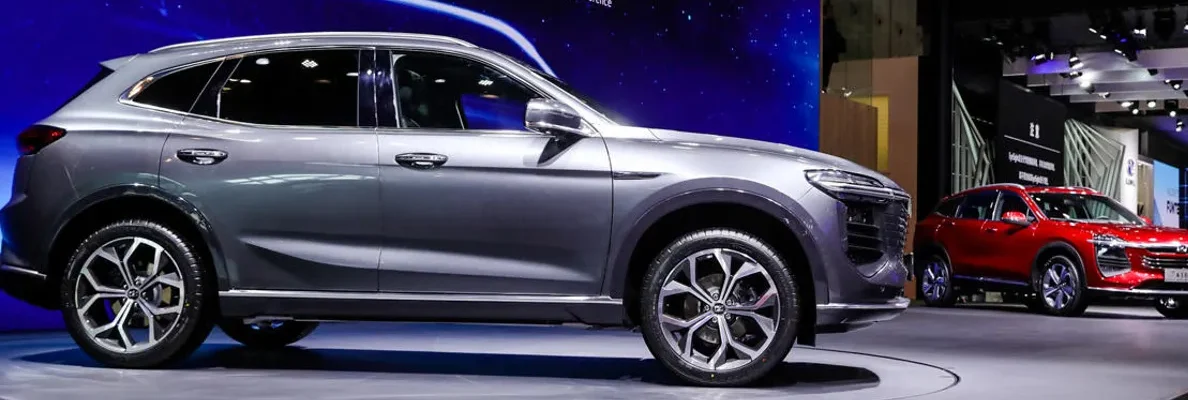China Pushes To Expand Global Footprints In Auto Market
OpenLife Nigeria reports that Beijing’s premier automobile exhibition is back after a four-year hiatus, highlighting how Chinese automakers have pushed the electrification of the world’s largest car market while expanding their own global footprints.
Auto China, which opened to the media on Thursday, throws its doors open to the general public on Monday.
It will run through May 4.
About 1,500 companies are exhibiting their latest rides, including China’s leading players BYD, Chery and SAIC Motors, along with tech-sector newcomers such as Tencent Holdings and Xiaomi.
During the show, 117 brand new models will be released and 41 new concept cars will be displayed, according to the organizer.
The show comes at a pivotal moment for the industry.
Chinese automakers are grappling with sluggish consumption and cutthroat competition at home, spurring them to export more vehicles.
At the same time, geopolitical tensions are flaring as Western governments complain that China is passing on its own overcapacity to the rest of the world.
This is particularly notable in Europe, where the European Commission is investigating “artificially cheap” electric vehicle shipments to the bloc.
While the exports will likely keep flowing, Chinese carmakers are increasingly setting up production abroad — in some cases, symbolizing the industry’s sea change by taking over facilities once used by big names from Japan and the U.S.
A case in point is the state-owned Chery, which has played a major role in China’s rise as a car exporter and doubled its exports to 937,148 units in 2023. Last Friday, it signed an agreement with Spanish counterpart Ebro-EV Motors to establish a joint venture in Barcelona.
The government of Catalonia, of which Barcelona is the capital, said the joint venture will use a former Nissan factory that closed in 2021. Production, mainly EVs, is expected to start by the end of the year, with plans to expand to 150,000 units annually by 2029. The total investment is valued at 400 million euros ($428 million).
This marks the first Chinese auto plant in Europe.
“Europe is the cradle of the automotive industry, and Spain has been of great interest to Chery,” Zhang Guibing, the company’s executive vice president, said at the signing ceremony.
At a certain point, the Barcelona plant will start exporting to other parts of Europe and “will be one of Chery’s main export bases worldwide,” he added.
Pedro Calef, CEO of Ebro, expressed a willingness to expand the relationship down the road. “This joint venture will study the creation of an R&D center in Barcelona for certifications in the European market in the future,” he said.
Ebro is a century-old automaker, tracing its history to a Ford factory that started assembling the legendary Model T in 1923. Spanish Prime Minister Pedro Sanchez was on hand to witness the signing with Chery, symbolizing the importance of the deal for the second-largest auto-producing country in Europe, after Germany. The agreement, Sanchez said, “contributes to making Spain the European hub for electric mobility.”
Chery is also paving the way for Chinese automakers in Vietnam. According to the Vietnamese trade ministry, Chery entered a joint venture agreement with local conglomerate Geleximco Group on April 4.
Their joint factory, to be located in the northern province of Thai Binh and built with a total investment of $800 million, is expected to start producing in 2026 with an annual capacity of 200,000 units.
The global offensive by companies like Chery reflects multiple factors, according to Stephen Dyer, co-leader of greater China business and Asia leader for the auto industry at consultancy AlixPartners.
The surging exports are not simply fueled by overcapacity, the Shanghai-based industry veteran said, noting that “China always had overcapacity issues for over a decade.”
But the combination of excess capacity and weak consumption amid the country’s economic uncertainty has sparked a ferocious domestic price war, which has sucked in many players including BYD, another company that is actively pushing overseas production.
Chinese automakers that venture overseas can sell their cars at better prices, especially as AlixPartners’ research in Western markets has found that recognition of their brands is improving, especially among younger generations.
Dyer considers the rising exports to be a “short- to mid-range strategy” for Chinese automakers, considering the various risks they entail — tariffs, currency fluctuations and geopolitical tensions.
Pointing out that several companies have either already announced or are considering European production, he expects the “export growth to slow down” in the near future.
In its latest annual report, the Shanghai-listed company said it has “initiated a site selecting process for a European auto manufacturing base, trying our utmost to realize local production, sales and servicing.” SAIC did not elaborate, but it is enhancing other overseas operations in the meantime.
A key market is India, where MG — a British marque SAIC acquired in 2007 — is on the move.
Last month, JSW Group, a major Indian conglomerate, agreed to acquire a 35% stake in MG Motor India. SAIC set up the unit in 2017, and it sold 62,000 cars in the South Asian country last year.
Parth Jindal, a son of JSW Group Chairman Sajjan Jindal, said the joint venture aims to “pursue the development of the EV ecosystem and to take a leadership position in this space” in India.
With a heftier capital base, the JV intends to triple its annual EV production capacity to 300,000 units in the western state of Gujarat, the home state of Prime Minister Narendra Modi.
Overall, SAIC has been China’s top car exporter for eight years running, selling 1.208 million units abroad in 2023, up 18.8% on the year. While SAIC relies heavily on joint ventures with Volkswagen and General Motors at home, MG cars accounted for 840,000 of those exports last year, mainly to Europe.
Wang Xiaoqiu, SAIC’s president, vowed to investors earlier this month that the company will “continue to deeply plow and open up global markets,” through both exports and local production.
Another crucial foreign market for Chinese automakers is Russia, where they are taking full advantage of the withdrawal of Western automakers since the invasion of Ukraine.
China’s Great Wall Motor, alongside peers Chery and Geely, ranked among the top sellers in Russia in 2023. They trailed only Lada, the storied Russian brand produced by Avtovaz — once 67.69% owned by France’s Groupe Renault, but sold for a symbolic single ruble after the war started.
Great Wall has a plant in Tula, about 200 kilometers south of Moscow, where the average capacity utilization rate was 123.6% according to its latest annual report, up from 28.63% a year ago. The Russian subsidiary brought in 1.49 billion yuan ($207 million) in net profit last year, over 20% of the group’s total.
Besides Russia, Great Wall has established two full production bases in Thailand and Brazil, plus knockdown assembly facilities in countries such as Ecuador and Pakistan.
So, while the global industry will be turning its attention to new cars gleaming under the bright lights of the Beijing auto show, China’s carmakers clearly have their sights set on the rest of the world.
Credit: Nikkei






